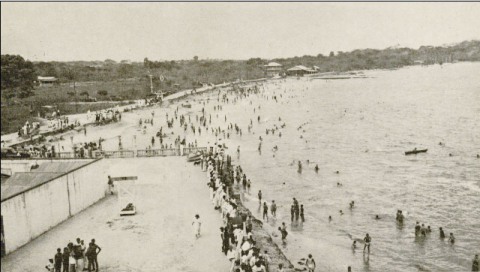After years of heavy development, accelerated construction growth, and a seemingly never-ending traffic problem, the bay of Panama has taken a hit. Environmentally speaking, it’s become a real problem. City waterways and run-offs have been neglected and polluted, and as a result, the bay has become contaminated; so much so, that at certain places it even emits a smell. That’s all going to change in the next few years as Panama has set out to complete a large-scale project to clean the waters, and make the bay safe and environmentally sound again.
The project, known as the “Sanitizing of the Bay”, is massive in scale. It has been going on for about five years, and the first phase is around 80% complete. The mission is an ambitious one, which aims to purify water in high lands through a massive treatment facility, and send it down stream into the Pacific bay of downtown Panama City. Essentially, they are cleaning the water at the source, and letting the natural flow of creeks, streams, and man-made waterways re-distribute it. Though costly, this allows for a very low carbon footprint, and won’t disrupt the natural system of moving waters that is already in place.
The bay sanitation project is another big civic achievement touted by both the national and city government, as a sign of progress and sustainability. It has an estimated cost of $692 million, and is being executed by IDAAN, which in Spanish is an acronym for “National Institute for Aqueducts and Sewers,” and is an agency of the Government of Panama. The institute’s primary goals are to improve national environmental standards, and make sure that the country’s waters are potable, clean, and free of health risks to its citizens.
Why it’s Crucial to Clean the Bay of Panama
By all accounts, “sanitizing” the Bay of Panama couldn’t have come at a better time. The pollution levels in the Bay of Panama are at a tipping point, and the contamination in city waterways has become a major health threat to locals. After more than a half-century of neglect, waters that were once swimmable and crystal clear have become open sewers for urban waste. This has contributed to a spike of water-born illnesses, and threatens the natural habitat of many fish, birds, and other small animals.
Avenida Balboa, the city’s iconic high-rise laden coastal avenue, was once a popular beach, not even 50 years ago. It was a favorite place for urban dwellers to swim, fish, and boat. In 2014, it is now prohibited to swim there, and despite a beautiful 5.5 mile pedestrian walkway and parks, the ocean emits a foul smell during low tide. The sanitizing project has high hopes that this will change that. And while you most likely won’t be swimming downtown anytime soon, IDAAN believes that within years, the water will be clean enough that you can.

Bay of Panama – Parque Urraca, 1940
Another goal of IDAAN’s bay sanitation project is to create a cultural awareness of the importance of cleaning up the environment, something that has been historically lacking in Panama. They have set up community outreach programs and education initiatives to get locals involved in keeping their natural resources clean and unpolluted. If all goes as planned, the bay sanitation project will provide clean waterways to nearly 80% of the entire city of Panama, with a bay that will once again be the glowing example of a modern, booming metropolis.
